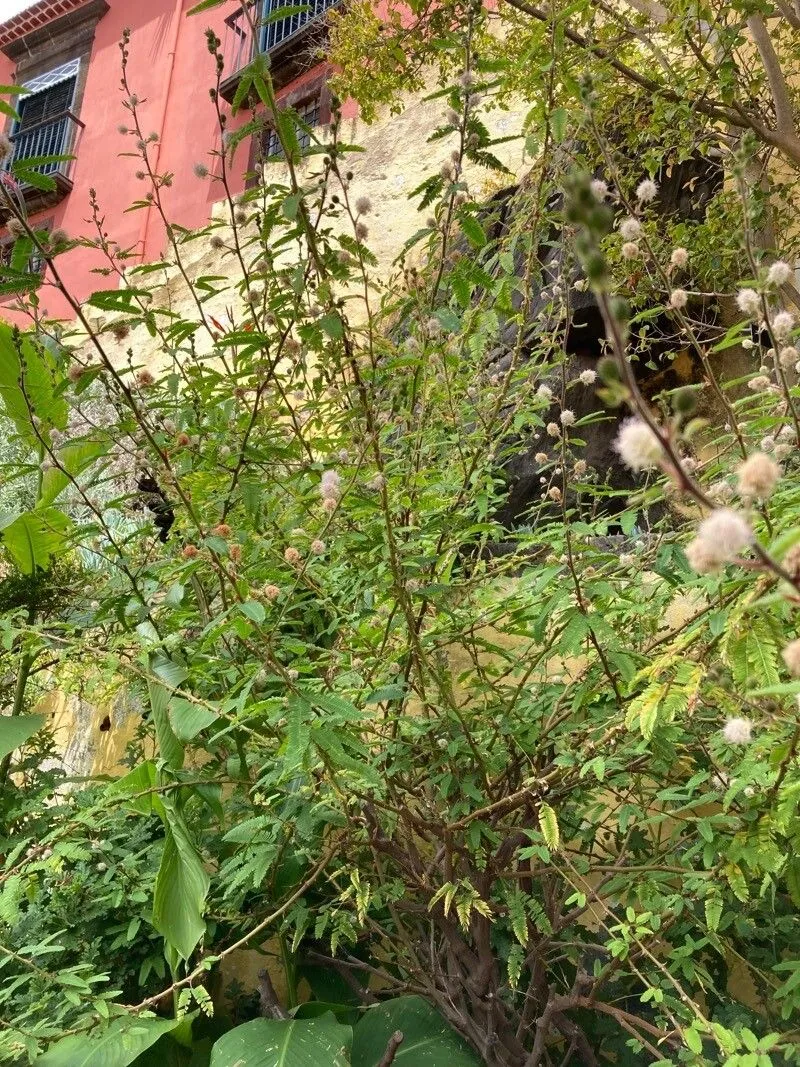
Author: L.
Bibliography: Sp. Pl.: 713 (1753)
Year: 1753
Status: accepted
Rank: species
Genus: Aeschynomene
Vegetable: Unknown
Observations: Trop. & Subtrop. America
The Joint-vetch, scientifically known as Aeschynomene americana, is a notable member of the Fabaceae family, well-regarded for its adaptability and presence across various regions. Described for the first time by Carl Linnaeus in his seminal work “Species Plantarum” in 1753, this plant has established itself in the tropical and subtropical regions of America.
Characterized by its unique botanical features, Aeschynomene americana thrives in humid and wetland environments, often found along marshes and riverbanks. Its growth pattern is typically erect or sprawling, with the potential to form extensive mats that play a crucial role in stabilizing soil and contributing to the ecosystem’s biodiversity.
The leaves of Joint-vetch are pinnately compound, displaying a delicate, feathery appearance that helps distinguish it from other species within its habitat. The plant’s inflorescences consist of small, yellow to pale yellow flowers, which contribute to its aesthetic appeal and ecological significance. These flowers are typically borne in clusters, making them a visual treat for pollinators such as bees, which play an essential role in its reproductive cycle.
As a member of the Fabaceae family, Aeschynomene americana showcases the characteristic ability to improve soil fertility through nitrogen fixation. This symbiotic relationship with nitrogen-fixing bacteria harbored in root nodules enables the plant to convert atmospheric nitrogen into a form that is usable by other organisms, thereby enriching the soil and promoting the growth of nearby vegetation.
Joint-vetch is valued not only for its ecological benefits but also for its potential use in agriculture and land management. It can be incorporated into crop rotation systems to enhance soil quality, and its rapid growth makes it an excellent option for erosion control in vulnerable landscapes.
In summary, the Joint-vetch (Aeschynomene americana) is a versatile and ecologically significant plant within the Fabaceae family. Its widespread presence in tropical and subtropical regions underscores its adaptability and role in promoting environmental health. Through nitrogen fixation, soil stabilization, and support for local biodiversity, this plant exemplifies how naturally occurring flora can contribute positively to their ecosystems.
Eng: american joint-vetch, joint-vetch, shyleaf
Deu: amerikanische schampflanze
Spa: pega pega, pulmón
En: Joint-vetch, American joint-vetch, Shyleaf, Joint Vetch, Yerba Rosario
Zh: Min gan he meng, 敏感合萌
Fr: Nélitte d’Amérique
De: Amerikanische Schampflanze
Ml: പൊന്ത്
Es: Pega pega, Pulmón
Zh-tw: 敏感合萌
© copyright of the Board of Trustees of the Royal Botanic Gardens, Kew.
© copyright of the Board of Trustees of the Royal Botanic Gardens, Kew.
© copyright of the Board of Trustees of the Royal Botanic Gardens, Kew.
Taken Mar 28, 2022 by Oliveira Vander (cc-by-sa)
Taken May 26, 2020 by Antoine Berton (cc-by-sa)
Taken Dec 27, 2020 by porras monse (cc-by-sa)
Taken Jan 1, 1900 by EOL − Acevedo, P. (cc-by-nc-sa)
Taken Jan 1, 1900 by EOL − Daniel H. Janzen (cc-by-nc-sa)
Taken Apr 17, 2019 by OTS – O. Vargas (cc-by-nc-sa)
Taken Apr 17, 2019 by OTS – O. Vargas (cc-by-nc-sa)
Taken Jan 1, 1900 by EOL − Daniel H. Janzen (cc-by-nc-sa)
Taken Nov 11, 2020 by Formina Lara (cc-by-sa)
Taken May 26, 2020 by Antoine Berton (cc-by-sa)
Taken Jan 28, 2013 by OTS – Oviedo-Brenes, Federico (cc-by-nc-sa)
Taken Mar 3, 2017 by OTS – Oviedo-Brenes, Federico (cc-by-nc-sa)
Taken Mar 3, 2017 by OTS – Oviedo-Brenes, Federico (cc-by-nc-sa)
Taken Dec 11, 2007 by Tela Botanica − Liliane Roubaudi (cc-by-sa)
Taken Dec 11, 2007 by Tela Botanica − Liliane Roubaudi (cc-by-sa)
Taken Nov 4, 2021 by MD zunaid (cc-by-sa)
Taken Sep 18, 2020 by Karishma R (cc-by-sa)
Taken Jul 20, 2020 by Olatorera Dickson-amusa (cc-by-sa)
Taken Jul 20, 2020 by Olatorera Dickson-amusa (cc-by-sa)
Taken Nov 28, 2021 by Castela Tiago (cc-by-sa)
Taken Aug 16, 2022 by Hansjoerg Hageld (cc-by-sa)
Taken Apr 17, 2019 by OTS – O. Vargas (cc-by-nc-sa)
Taken Jan 1, 1900 by EOL − Daniel H. Janzen (cc-by-nc-sa)
Taken Jan 1, 1900 by EOL − Marco Schmidt (cc-by-nc-sa)
Taken Apr 16, 2008 by EOL − Michael Kesl (public)
Taken Oct 9, 2019 by Rajendra Rajendra Choure (cc-by-sa)
Taken Nov 1, 2019 by Diana (cc-by-sa)
Taken Jan 1, 1900 by EOL − Daniel H. Janzen (cc-by-nc-sa)
Taken Apr 17, 2019 by OTS – O. Vargas (cc-by-nc-sa)
Family: Myrtaceae Author: (F.Muell.) K.D.Hill & L.A.S.Johnson Bibliography: Telopea 6: 402 (1995) Year: 1995 Status:…
Family: Rubiaceae Author: Pierre ex A.Froehner Bibliography: Notizbl. Bot. Gart. Berlin-Dahlem 1: 237 (1897) Year:…
Family: Sapindaceae Author: Koidz. Bibliography: J. Coll. Sci. Imp. Univ. Tokyo 32(1): 38 (1911) Year:…
Family: Asteraceae Author: A.Gray Bibliography: Pacif. Railr. Rep.: 107 (1857) Year: 1857 Status: accepted Rank:…
Family: Fabaceae Author: Medik. Bibliography: Vorles. Churpfälz. Phys.-Ökon. Ges. 2: 398 (1787) Year: 1787 Status:…
Family: Aspleniaceae Author: (Cav.) Alston Bibliography: Bull. Misc. Inform. Kew 1932: 309 (1932) Year: 1932…